
Edward John Moreton Drax Plunkett, 18th Baron of Dunsany,, commonly known as Lord Dunsany, was an Anglo-Irish writer and dramatist. He published more than 90 books during his lifetime, and his output consisted of hundreds of short stories, plays, novels, and essays. He gained a name in the 1910s as a great writer in the English-speaking world. Best known today are the 1924 fantasy novel, The King of Elfland's Daughter, and his first book, The Gods of Pegāna, which depicts a fictional pantheon. Many critics feel his early work laid grounds for the fantasy genre.
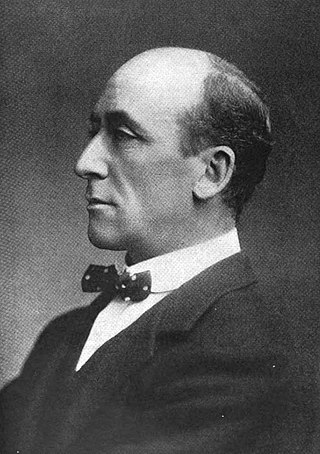
Algernon Henry Blackwood, CBE was an English broadcasting narrator, journalist, novelist and short story writer, and among the most prolific ghost story writers in the history of the genre. The literary critic S. T. Joshi stated, "His work is more consistently meritorious than any weird writer's except Dunsany's" and that his short story collection Incredible Adventures (1914) "may be the premier weird collection of this or any other century".

John Coulthart is a British graphic artist, illustrator, author and designer who has produced book covers and illustrations, CD covers and posters. He is also the author of the critically acclaimed Lovecraft-inspired book The Haunter of the Dark: And Other Grotesque Visions which contains a collaboration with Alan Moore entitled The Great Old Ones that is unique to this book and also has an introduction by Alan Moore.
The Space Trilogy is a series of science fiction novels by C. S. Lewis. The trilogy consists of Out of the Silent Planet (1938), Perelandra (1943), and That Hideous Strength (1945). A philologist named Elwin Ransom is the protagonist of the first two novels and an important character in the third.
George H. Scithers was an American science fiction fan, author and editor.

The Dream-Quest of Unknown Kadath is a novella by American writer H. P. Lovecraft. Begun probably in the autumn of 1926, the draft was completed on January 22, 1927 and it remained unrevised and unpublished in his lifetime. It is both the longest of the stories that make up his Dream Cycle and the longest Lovecraft work to feature protagonist Randolph Carter. Along with his 1927 novel The Case of Charles Dexter Ward, it can be considered one of the significant achievements of that period of Lovecraft's writing. The Dream-Quest combines elements of horror and fantasy into an epic tale that illustrates the scope and wonder of humankind's ability to dream.

Elements of the supernatural and the fantastic were an element of literature from its beginning. The modern genre is distinguished from tales and folklore which contain fantastic elements, first by the acknowledged fictitious nature of the work, and second by the naming of an author. Works in which the marvels were not necessarily believed, or only half-believed, such as the European romances of chivalry and the tales of the Arabian Nights, slowly evolved into works with such traits. Authors like George MacDonald (1824–1905) created the first explicitly fantastic works.
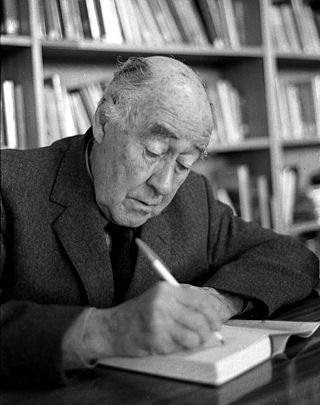
Mervyn Wall (1908–1997) was an Irish writer who was born in Dublin. Wall attended Belvedere College and worked as a civil servant 1934–48, for Radio Éireann from 1948 to 1957, and as Secretary of the Arts Council for 1957–75. His wife, Frances Feehan, was a theatre and music critic.

A Voyage to Arcturus is a novel by the Scottish writer David Lindsay, first published in 1920. An interstellar voyage is the framework for a narrative of a journey through fantastic landscapes. The story is set at Tormance, an imaginary planet orbiting Arcturus, which in the novel is a binary star system, consisting of the stars Branchspell and Alppain. The lands through which the characters travel represent philosophical systems or states of mind as the main character, Maskull, searches for the meaning of life. The book combines fantasy, philosophy, and science fiction in an exploration of the nature of good and evil and their relationship with existence. Described by critic, novelist, and philosopher Colin Wilson as the "greatest novel of the twentieth century", it was a central influence on C. S. Lewis' Space Trilogy, and through him on J. R. R. Tolkien, who said he read the book "with avidity". Clive Barker called it "a masterpiece" and "an extraordinary work ... quite magnificent".
John Gregory Betancourt is an American writer of science fiction, fantasy and mystery novels, as well as short stories. He is also known as the founder and publisher, with his wife Kim Betancourt, of Wildside Press in 1989. In 1998, they entered the print on demand (PoD) market and greatly expanded their production. In addition to publishing new novels and short stories, they have undertaken projects to publish new editions of collections of stories that appeared in historic magazines.

Darrell Charles Schweitzer is an American writer, editor, and critic in the field of speculative fiction. Much of his focus has been on dark fantasy and horror, although he does also work in science fiction and fantasy. Schweitzer is also a prolific writer of literary criticism and editor of collections of essays on various writers within his preferred genres.
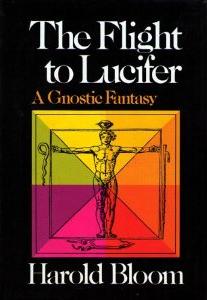
The Flight to Lucifer: A Gnostic Fantasy is a 1979 fantasy novel by American critic Harold Bloom, inspired by his reading of David Lindsay's fantasy novel A Voyage to Arcturus (1920). The plot, which adapts Lindsay's characters and narrative and features themes drawn from Gnosticism, concerns Thomas Perscors, who is transported from Earth to the planet Lucifer by Seth Valentinus.

The Sword of Welleran and Other Stories is the third book by Anglo-Irish fantasy writer Lord Dunsany, considered a major influence on the work of J. R. R. Tolkien, H. P. Lovecraft, Ursula K. Le Guin, and others. It was first published in hardcover by George Allen & Sons in October 1908, and has been reprinted a number of times since. Issued by the Modern Library in a combined edition with A Dreamer's Tales as A Dreamer's Tales and Other Stories in 1917.
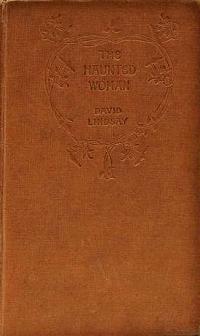
The Haunted Woman is a dark, metaphysical fantasy novel by British writer David Lindsay. It was first published, somewhat cut, as a serial in The Daily News in 1921. It was first published in book form by Methuen & Co. Ltd., London, in 1922. The work supposedly marked Lindsay's attempt to write a more "commercial" novel after the initial failure of his first work, A Voyage to Arcturus (1920), though he began it before that work was published. It was reissued by Gollancz in 1947. It was republished by the Newcastle Publishing Company as the fourth volume of the Newcastle Forgotten Fantasy Library in March, 1975; the Newcastle edition was the first American edition. Later editions were issued by Borgo Press (1980), Canongate Books (1987), Wildside Press (2003), and Tartarus Press (2004).

The Robert E. Howard Reader is a collection of essays on fantasy writer Robert E. Howard and his works, edited by Darrell Schweitzer. Originally scheduled for publication in 2007, it was ultimately published in September 2010 by Wildside Press.

Sekenre: The Book of the Sorcerer is a collection of fantasy short stories by American writer Darrell Schweitzer featuring his dark fantasy protagonist, the child sorcerer Sekenre, a sequel to the novel The Mask of the Sorcerer (1995). The book was illustrated by Stephen Fabian. It was first published as a trade paperback by Wildside Press in 2004.
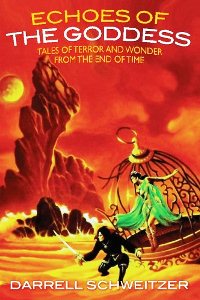
Echoes of the Goddess: Tales of Terror and Wonder From the End of Time is a collection of fantasy short stories by American writer Darrell Schweitzer, a prequel to his novel The Shattered Goddess (1983). The book is illustrated with a cover and frontispiece by Stephen Fabian. It was first published as a trade paperback by Wildside Press in February 2013.
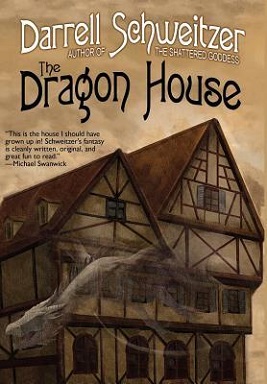
The Dragon House is a contemporary fantasy novel by American writer Darrell Schweitzer. It was first published in hardcover and trade paperback by Wildside Press in April 2018, with an ebook edition following from the same publisher in January 2019.

The Shattered Goddess is a fantasy novel by American writer Darrell Schweitzer, illustrated by Stephen Fabian.
















